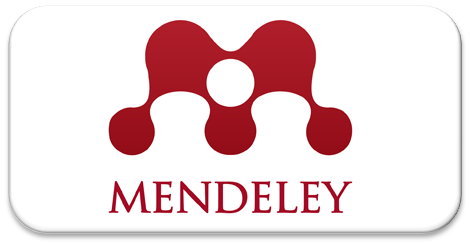Penerapan Metode Eksperimen Menggunakan Bahan Alami di Lingkungan Sekitar untuk Meningkatkan Hasil Belajar Siswa Kelas XI IPA 1 MAN 1 Pidie
Abstract
The low interest of students in taking lessons is one of the factors that cause low student learning outcomes. Therefore, an interesting learning model is needed to increase student interest and learning outcomes. This study aims to improve student learning outcomes in the Chemistry subject matter of acid and base indicators using a learning model with experimental methods based on natural materials found in the surrounding environment. This research is classroom action research, which consists of two cycles. Based on the research results, it is known that the learning model with this experimental method can increase students' interest and learning outcomes with the acquisition of cognitive, affective, and psychomotor classical completeness scores in the first cycle, namely 0%, 77.5%, 100%, and the second cycle, namely 100%, 100 %, 100%. The average value of cognitive, affective, and psychomotor in the first cycle are 48.30; 82.75; 73; points, and in the second cycle are 90.75; 88.09; 86.19 points. This study suggests that experimental methods using natural materials in the surrounding environment for other chemical materials need to be carried out so that students become more interested in learning chemistry.
Abstrak
Rendahnya minat siswa dalam mengikuti pelajaran menjadi salah satu faktor yang menyebabkan hasil belajar siswa menjadi rendah. Oleh karena itu diperlukan model pembelajaran yang menarik untuk meningkatkan minat dan hasil belajar siswa. Kajian ini bertujuan untuk meningkatkan hasil belajar siswa pada mata pelajaran Kimia materi Indikator Asam dan Basa melalui model pembelajaran dengan metode eksperimen menggunakan bahan alami di lingkungan sekitar. Penelitian ini merupakan Penelitian Tindakan Kelas (PTK) yang terdiri dari dua siklus. Berdasarkan hasil penelitian, diketahui bahwa model pembelajaran dengan metode eksperimen ini dapat meningkatkan minat dan hasil belajar siswa dengan perolehan nilai ketuntasan klasikal kognitif, afektif, psikomotor siklus I yaitu 0%, 77,5%, 100% dan siklus II yaitu 100%, 100%, 100%. Nilai rata-rata kognitif, afektif dan psikomotor siklus I yaitu 48,30; 82,75; 73 dan siklus II yaitu 90,75; 88,09; 86,19. Penelitian lanjutan menggunakan metode eksperimen menggunakan bahan alami di lingkungan sekitar untuk materi kimia yang lain perlu dilakukan agar siswa menjadi semakin tertarik terhadap pembelajaran kimia.
References
Amin, K., Ikramatoun, S., Halik, H., & Darwin, D. (2022). Relevansi Pemikiran Paulo Freire terhadap Pendidikan di Aceh. SOCIA: Jurnal Ilmu-Ilmu Sosial, 19(1), 13–21. https://doi.org/10.21831/SOCIA.V19I1.34640
Arsyad, A. (2005). Media Pembelajaran. PT. Raja Grafindo Persada.
Dimyati, & Mudjiono. (2013). Belajar dan Pembelajaran. Reineka Cipta.
Hamruni. (2004). Meningkatkan Kemampuan dan Kecepatan Belajar dalam Konsep Accelerated Learning. Jurnal Kependidikan Islam, 1(2).
Lina, V. B., & Sadipun, B. (2018). Pendidikan Karakter Berbasis Budaya Lokal Kabupaten Ngada, Indentifikasi Nilai-nilai Budaya Lokal Kabupaten Ngada. Jurnal AKRAB JUARA, 3(2), 56–65. http://akrabjuara.com/index.php/akrabjuara/article/view/194
Permana, I. A., & Sudrajat, J. (2022). Pengelolaan Manajemen dalam Upaya Meningkatkan Kualitas Mutu Pendidikan. JIIP - Jurnal Ilmiah Ilmu Pendidikan, 5(5), 1479–1487. https://doi.org/10.54371/jiip.v5i5.590
Seprianto, D. (2022). Perancangan dan pembuatan heat exchanger tipe wire and tube untuk alat praktikum skala laboratorium. Universitas Tridinanti.
Sudjana, N. (2004). Dasar-dasar Proses Belajar Mengajar. Sinar Baru Algensido Offset.
Copyright (c) 2022 Safrina

This work is licensed under a Creative Commons Attribution-ShareAlike 4.0 International License.
Authors who publish in SINTHOP: Media Kajian Agama, Sosial dan Budaya agree to the following terms:
- Authors retain copyright and grant the journal right of first publication with the work simultaneously licensed Attribution-ShareAlike 4.0 International (CC BY-SA 4.0) that allows others to share the work with an acknowledgment of the work's authorship and initial publication in this journal.
- Authors are able to enter into separate, additional contractual arrangements for the non-exclusive distribution of the journal's published version of the work (e.g., post it to an institutional repository or publish it in a book), with an acknowledgment of its initial publication in this journal.
- Authors are permitted and encouraged to post their work online (e.g., in institutional repositories or on their website) prior to and during the submission process, as it can lead to productive exchanges, as well as earlier and greater citation of published work. (See The Effect of Open Acces)









.png)

.png)
.png)
.png)


